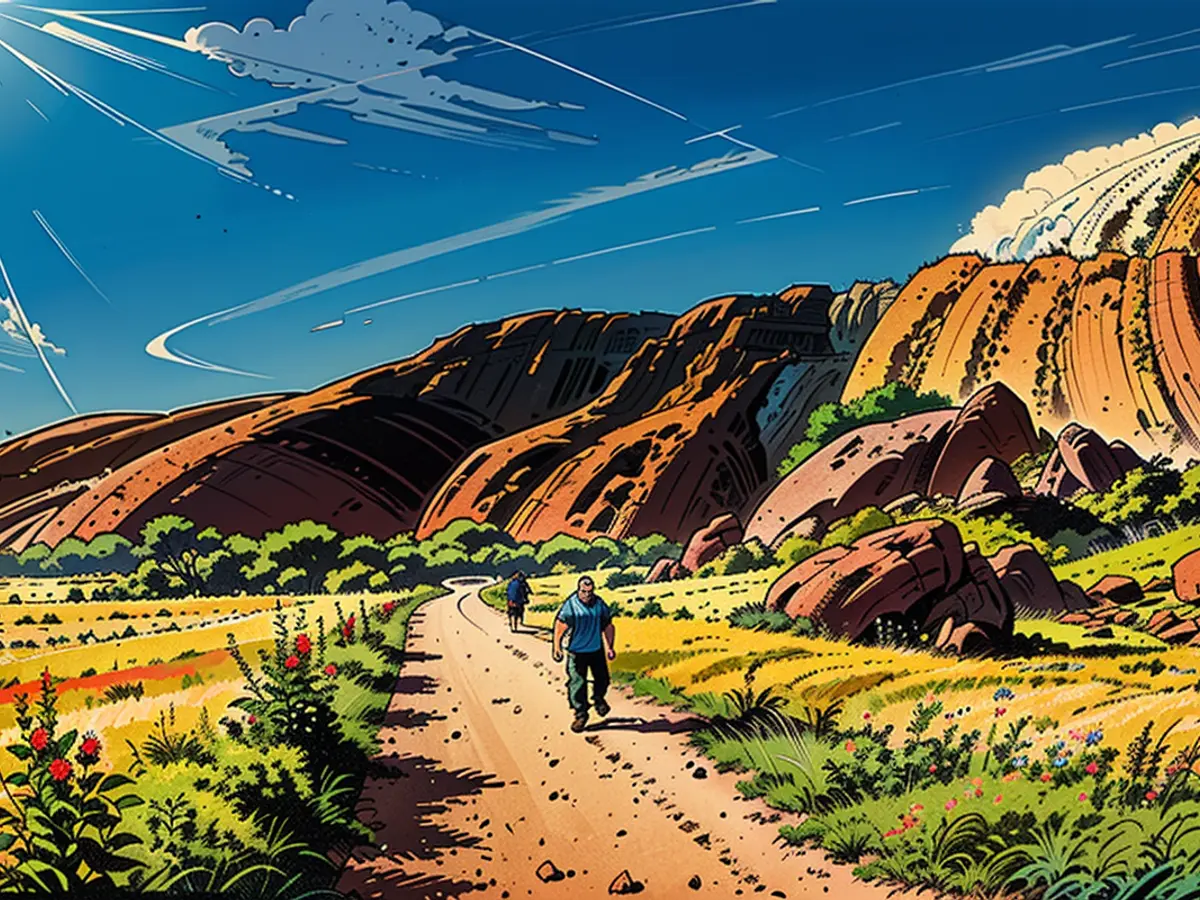What's the current state of Australia's sacred site, Uluru?
For numerous vacationers, ascending Uluru was once an unforgettable experience during their Australian journey. The indigenous people had persistently advocated for a prohibition on scaling the sacred stone, and in 2019, their desires were fulfilled. So, what does Uluru appear like now?
For the native inhabitants, few locations hold as profound a spiritual value as Uluru. Majestic, it stands 350 meters above the rustic-brown terrain, speckled with spinifex and various desert flora. Renamed Ayers Rock during colonial times, it is now commonly recognized by its original moniker. However, the victory of the Aboriginal population in safeguarding their sacred site should not halt here.
For generations, the local Anangu people had petitioned for a ban on tourist ascents of Uluru. Following prolonged deliberations, the ban was implemented five years ago. To the Anangu, Uluru housed the Rainbow Serpent from Dreamtime mythology and served as the setting for the tale of the Mala people, who once coexisted peacefully on the sunlit side of the rock. Witnessing thrill-seekers recklessly tread on their sacred ground was nearly unbearable. But it wasn't just the disrespect; despite signs and brochures, climbers left behind mounds of waste. Some even defecated on the UNESCO World Heritage site, with rainwater carrying urine and feces into fragile waterholes used by animals.
Today, the former climbing trail is inaccessible, marked by a white sign stating "Permanent Closure 26 October 2019." Cameras monitor the area, and warning signs remind visitors that trespassing will result in penalties. The steel cable and 138 steel posts, once aids for climbers, have been removed, but the route remains etched into the arkose rock like a scar, a testament to the hazard it posed.
The rock isn't just steep but also incredibly smooth. "Thirty-seven individuals have perished climbing Uluru since the 1950s," explains Matt, a tour guide who conducts walks around the rock. "The last one was a Japanese tourist, merely a year before it closed."
What actions are permissible at Uluru now?
Circling it, taking in its waterholes and caves, or exploring adjacent paths on a Segway is tolerable, provided Uluru is treated with care. Helicopter flights to the impressive monolith are also offered.
However, flying directly over it is not allowed, as one provider explains: "We adhere to all protocols to respect the indigenous landowners and the land itself," according to the "Professional Helicopter Services" website.
New attractions have also appeared, such as enchanting laser and drone displays that depict stories from Dreamtime onto the red earth, viewable from a nearby platform. It seems attitudes have evolved - most tourists now express understanding and support for the climbing ban when asked.
A Contentious Issue
This was a long-standing debate. Some viewed the climb as an inalienable right for the inhabitants of the continent's fifth quadrant, especially for the awe-inspiring panoramic view of the seemingly endless outback. However, many felt it was appropriate to heed the Aborigines' pleas, an estimated 980,000 of whom, although belonging to Australia, are often disadvantaged compared to the remaining 26 million Australians.
Farewell to the Rainbow Serpent
The climbing ban signaled the end of a turbulent period in colonial history. Archives document the rock's first scaling by a white man in 1873, who named it after Sir Henry Ayers, a former Premier of South Australia.
In the early days of Uluru tourism, during the 1950s, only a handful of climbers visited, but by the end, it exceeded 300,000 a year. On some days, an unending queue of people battled their way up, closely packed like a colossal ant path.
The prohibition was reported globally five years ago by numerous media outlets. "This is a very sacred site for us, like our church," said Rameth Thomas, an Anangu representative, to the BBC at the time. He could see Uluru from his home every day. Even as a child, he would advise tourists not to climb the rock. "All our stories are on this rock," he emphasized. Now, they are well-guarded, and the Rainbow Serpent has finally found serenity.
Other tourists now explore Uluru's waterholes and caves or take Segway tours around the monument, treating it with care. The local indigenous population is pleased that their sacred site is better respected, as they believe the Rainbow Serpent from their Dreamtime mythology is now at peace.






